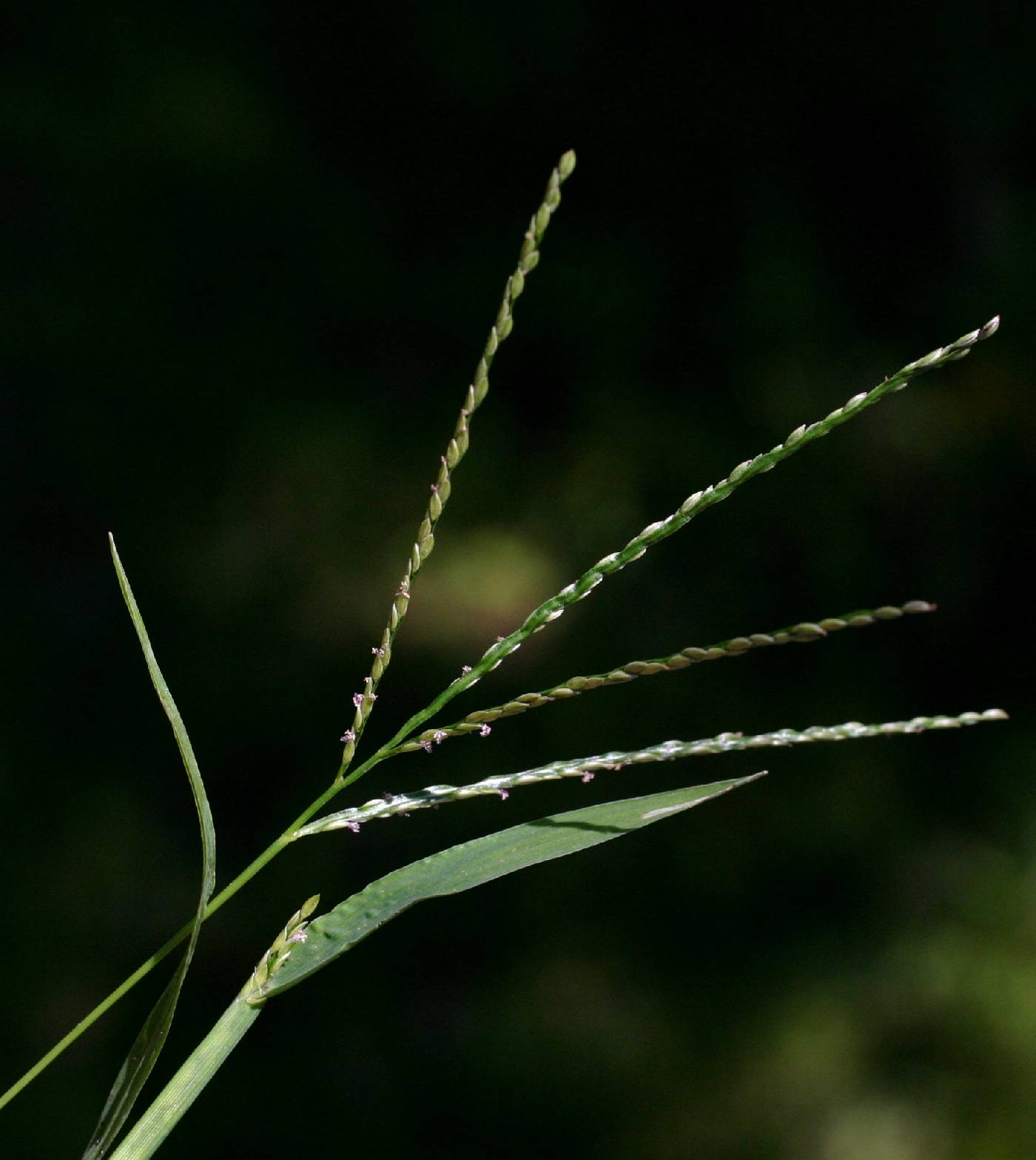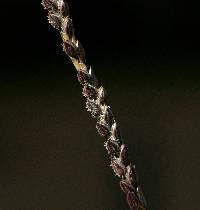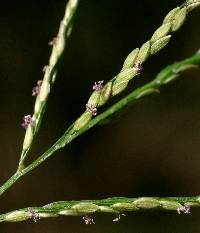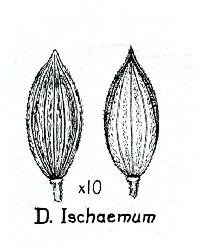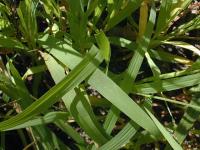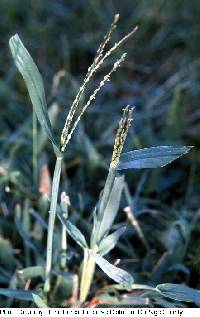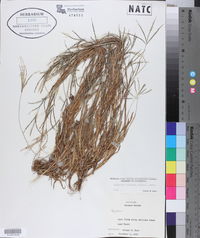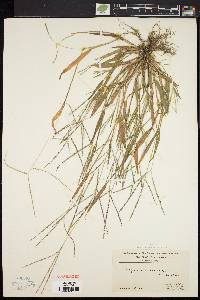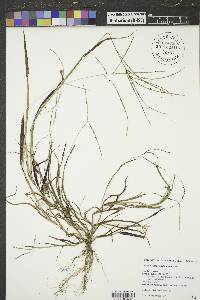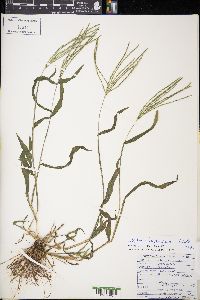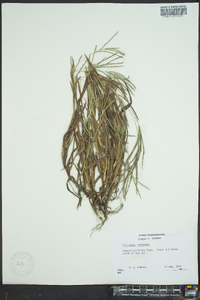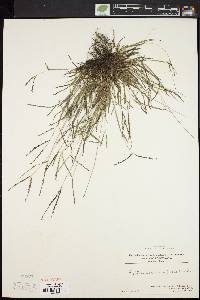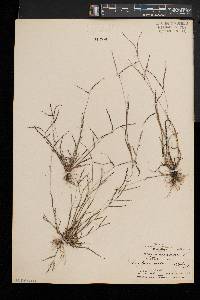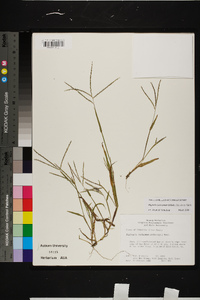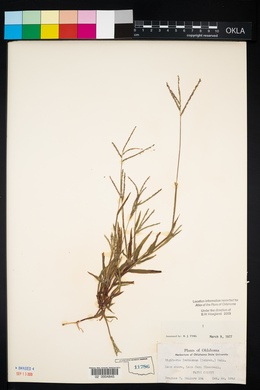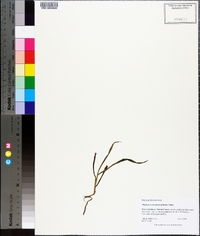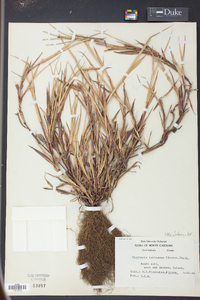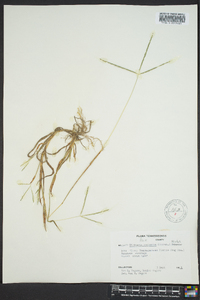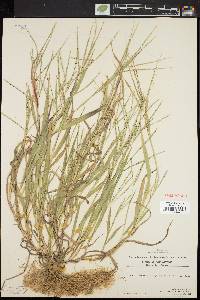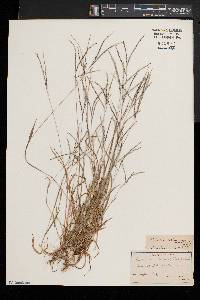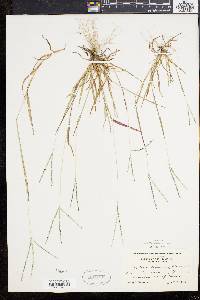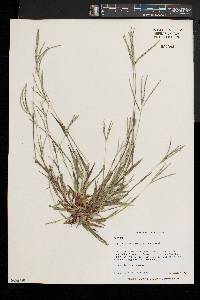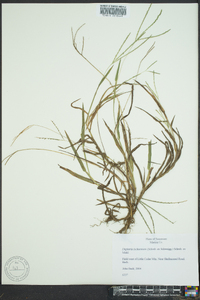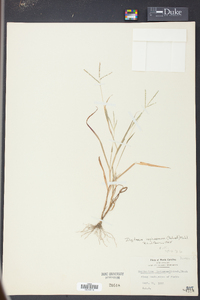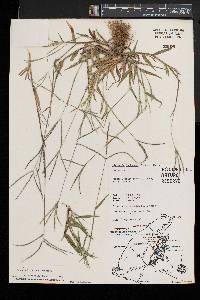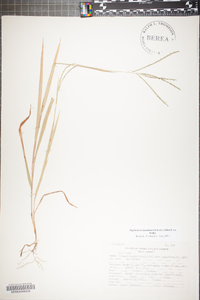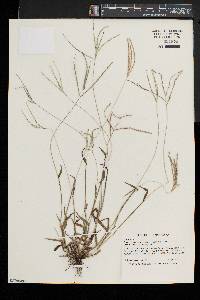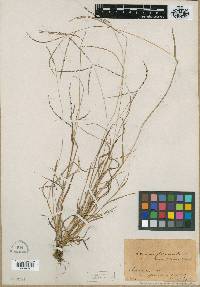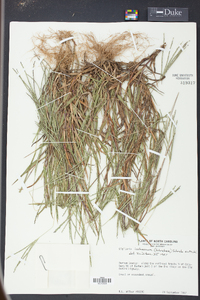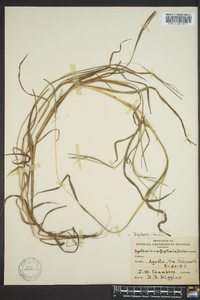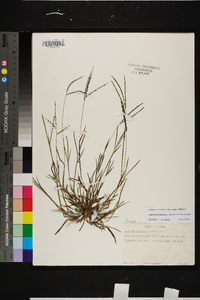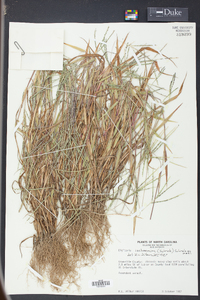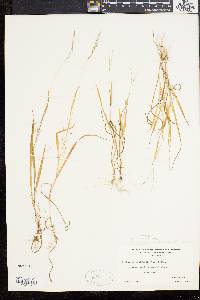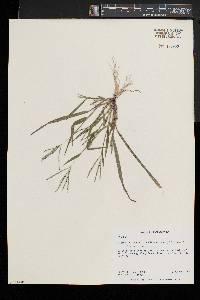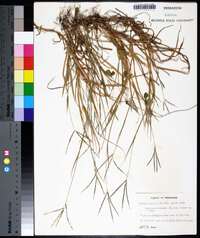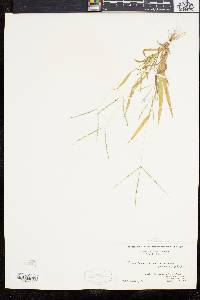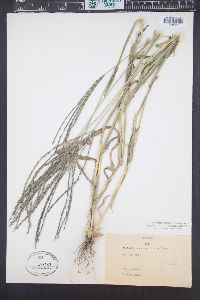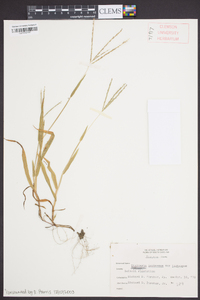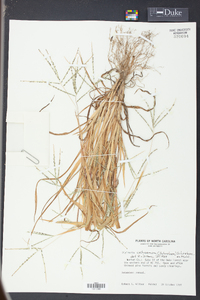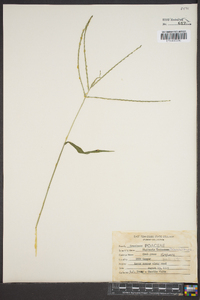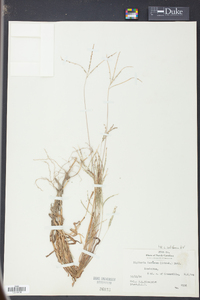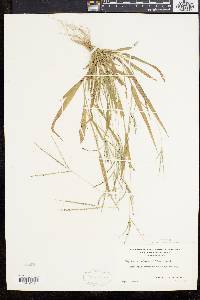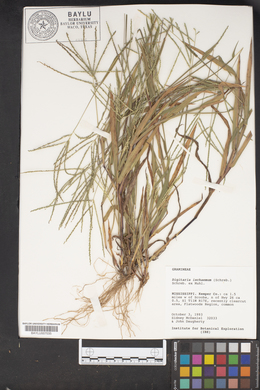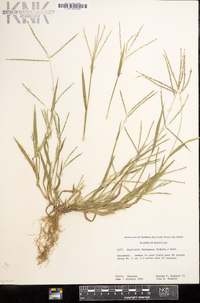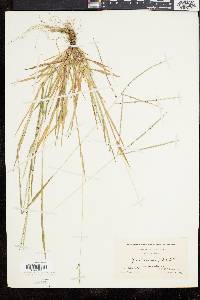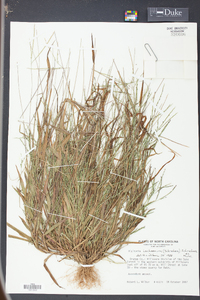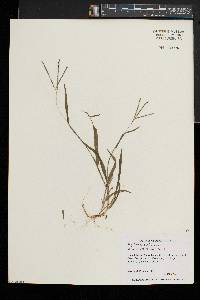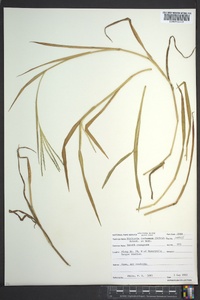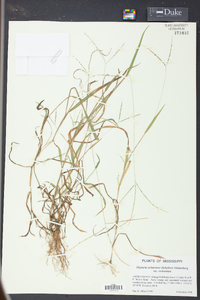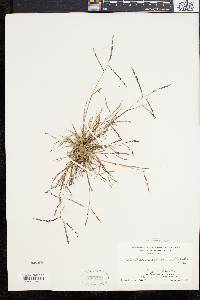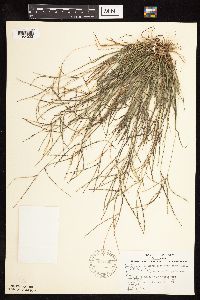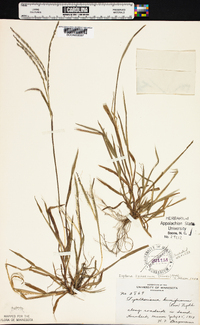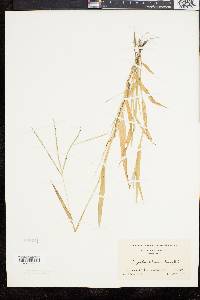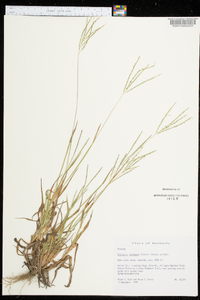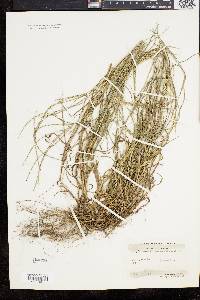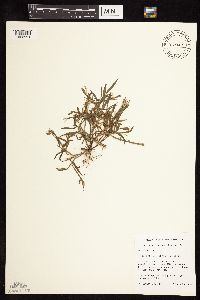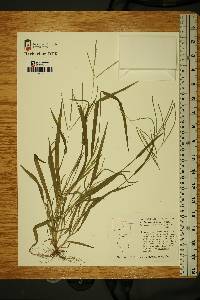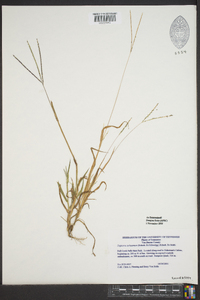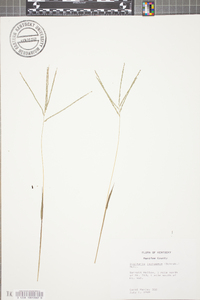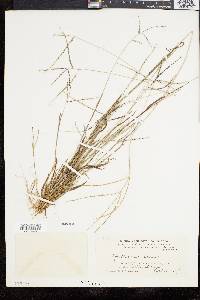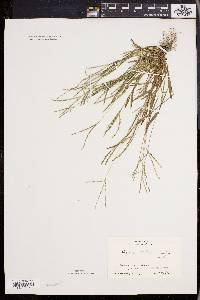
|
|
|
|
Family: Poaceae
Smooth Crab Grass, more...Mississippi smooth crabgrass, small crabgrass, Digitaire Astringente
[Digitaria glabra (Schrad.) P. Beauv., moreDigitaria humifusa , Digitaria ischaemum var. mississippiensis (Gattinger) Fern., Panicum glabrum , Panicum glabrum var. mississippiense Scribn., Panicum humifusum (Pers.) Kunth, Panicum ischaemum Schreb., Panicum phaeocarpum var. drummondianum Nees, Paspalum humifusum (Pers.) Poir., Syntherisma glabra Schrad., Syntherisma humifusum (Pers.) Rydb., Syntherisma ischaemum (Schreb.) Nash] |
Plants annual or of indefinite duration. Culms 20-55(70) cm, decumbent, branching and rooting at the lower nodes; nodes 3-4. Sheaths glabrous or sparsely pubescent; ligules 0.6-2.5 mm; blades 1.5-9 cm long, 3-5 mm wide, glabrous, with a few papillose-based hairs basally. Panicles terminal and axillary; terminal panicles with 2-7 spikelike primary branches, subdigitate or on 0.5-2 cm rachises; primary branches 6-15.5 cm, axes wing-margined, wings at least 1/2 as wide as the midribs, with spikelets in groups of 3, lower portions of the longer pedicels adnate to the axes; secondary branches rarely present; axillary inflorescences always present in some of the lower sheaths, entirely or partially concealed. Spikelets 1.7-2.3 mm, homomorphic, narrowly elliptic. Lower glumes absent or a veinless, membranous rim; upper glumes 1.3-2.3 mm, from 3/4 as long as to equaling the upper lemmas, appressed-pubescent; lower lemmas 1.7-2.3 mm, 7-veined, veins unequally spaced, smooth, pubescent; upper lemmas dark brown at maturity; anthers 0.4-0.6 mm. 2n = 36. Digitaria ischaemum is a Eurasian weed that is now common in lawns, gardens, fields, and waste ground in warm-temperate regions throughout the world, including much of the Flora region. Larger plants with 5-7 inflorescence branches 8-15 cm long have been called D. ischaemum var. mississippiensis (Gatt.) Fernald, but they intergrade with more typical plants, and so do not merit taxonomic recognition. Annual herb 20 cm - 0.5 m tall Leaves: alternate, two-ranked. Sheaths open, sometimes sparsely hairy. Ligules 0.5 - 2.5 mm long, membranous. Blades 1.5 - 9 cm long, 3 - 5 mm wide, flat, parallel-veined, with a few bumpy-based hairs at the base. Inflorescence: an arrangement of spikelet-bearing branches (panicle), terminal and axillary. Terminal panicles with two to seven spike-like primary branches, nearly palmate (or on 0.5 - 2 cm long axes). Primary branches 6 - 15.5 cm long, winged along the axis, bearing spikelets in groups of three. Rarely having secondary branches. Axillary inflorescences found in a few of the lower sheaths. Fruit: a caryopsis, indehiscent, enclosed within the persistent lemma and palea, flat on one side and convex on the other (plano-convex). Culm: decumbent, 20 cm - 0.5 m long, round in cross-section, rooting and branching at the lower nodes. Nodes three to four. Spikelets: 1.5 - 2.5 mm long, narrowly elliptic. Florets: two per spikelet. Lower florets sterile. Upper florets bisexual. Anthers three, about 0.5 mm long. Stigmas red. Glumes: Lower glumes absent or just a membranous rim. Upper glumes 1.5 - 2.5 mm long, shorter than or equaling the upper lemmas, appressed-hairy. Lemmas: Lower lemmas 1.5 - 2.5 mm long, equal to upper lemmas, seven-veined (unequally spaced), membranous, and hairy. Upper lemmas brown, obscurely veined, with margins that embrace the upper paleas. Paleas: Lower paleas absent. Upper paleas similar in size and texture to upper lemmas. Similar species: No information at this time. Flowering: late August to mid-September Habitat and ecology: Introduced from Europe. Common in lawns and waste ground. Often seen growing in the cracks of sidewalks. Occurence in the Chicago region: non-native Etymology: Digitaria comes from the Latin word digitus, meaning finger, referring to the digitate inflorescence of some species. Ischaemum presumably comes from the Greek word ischaemos, meaning styptic, referring to the plant's supposed ability to stop bleeding. Author: The Morton Arboretum Plants forming loose tufts, ascending or suberect, only seldom rooting at the lower nodes; herbage glabrous (or the upper margins of the sheaths ciliate); racemes 2-5(-8), 4-10(-15) cm; spikelets elliptic or somewhat obovate, 1.7-2.3 mm; becoming dark brown or purple-black; first glume lacking or minute and hyaline; second glume and sterile lemma equal and as long as the spikelet, both ±pubescent or subtomentose with capitellate hairs, especially in strips between the veins; 2n=36, 45; otherwise much like no. 4 [Digitaria sanguinalis (L.) Scop.]. Native of Eurasia, now established as a weed over much of the U.S., and throughout our range, but less abundant than no. 4. (D. humifusa) Gleason, Henry A. & Cronquist, Arthur J. 1991. Manual of vascular plants of northeastern United States and adjacent Canada. lxxv + 910 pp. ©The New York Botanical Garden. All rights reserved. Used by permission. From Flora of Indiana (1940) by Charles C. Deam Infrequent in the northern part of the state and frequent to common in moist, clayey flats in the southwestern counties. Like the next species, it is found almost everywhere except in dense woodland and very wet soil. It prefers a moist, sandy soil and is found generally in cultivated fields, pastures, meadows, and waste places and along roadsides. In the southwestern counties in the moist, clayey, fallow fields, it forms dense mats over large areas. ...... Indiana Coefficient of Conservatism: C = null, non-native Wetland Indicator Status: FACU |
|
|
|

